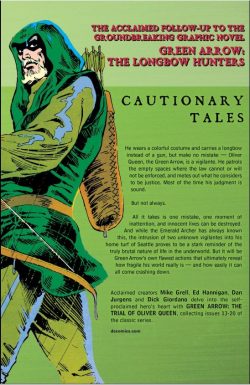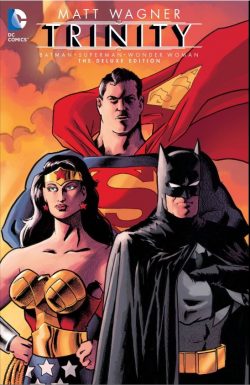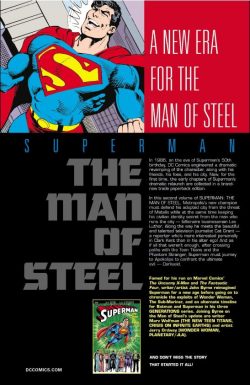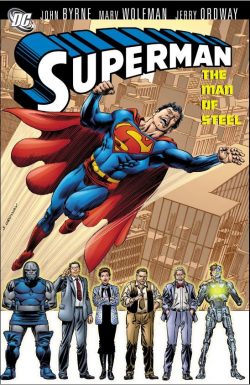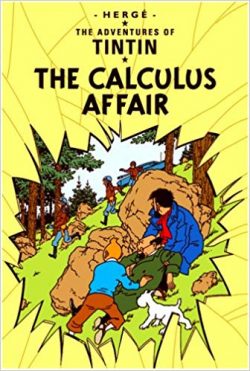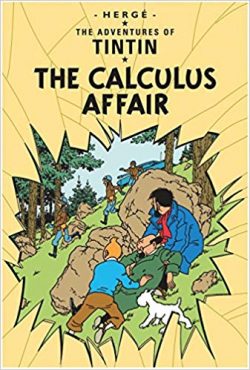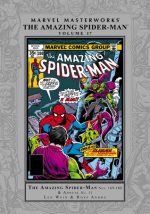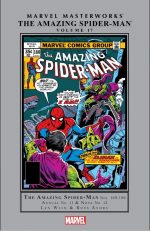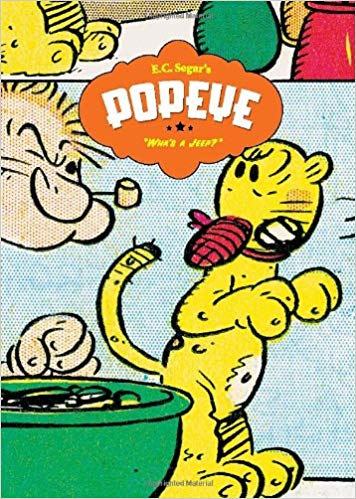
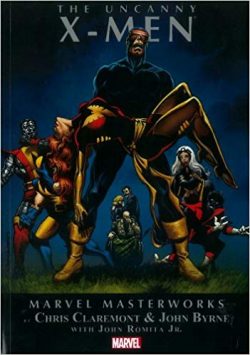
By Chris Claremont, Mary Jo Duffy, Bob Layton, John Byrne, Terry Austin, John Romita Jr., Bob McLeod, Dave Cockrum, Ricardo Villamonte, John Buscema, Klaus Janson, George Pérez, Alfredo Alcala & various (Marvel)
ISBN: 978-0-7851-5872-1 (TPB) 978-0-7851-1698-1 (HB)
In the autumn of 1963, The X-Men #1 introduced Scott (Cyclops) Summers, Bobby (Iceman) Drake, Warren (Angel) Worthington, Jean (Marvel Girl) Grey and Hank (The Beast) McCoy: very special students of Professor Charles Xavier.
The teacher was a wheelchair-bound telepath dedicated to brokering peace and integration between the masses of humanity and the emergent off-shoot race of mutants dubbed Homo superior; considered by many who knew him as a living saint.
After nearly eight years of eccentrically spectacular adventures the mutant misfits virtually disappeared at the beginning of 1970 during another periodic downturn in superhero comics sales. Just like in the closing years of the 1940s, mystery men faded away as supernatural mysteries and traditional genre themes once more dominated the world’s entertainment fields…
Although the title was revived at the end of the year as a cheap reprint vehicle, the missing mutants were reduced to guest-stars and bit-players throughout the Marvel universe and the Beast was refashioned as a monster fit for the global uptick in scary stories until Len Wein & Dave Cockrum revived and reordered the Mutant mystique with a brand-new team in Giant Size X-Men #1 in 1975.
To old foes-turned-friends Banshee and Sunfire was added one-shot Hulk hunter Wolverine, and all-original creations Kurt Wagner, a demonic German teleporter codenamed Nightcrawler, African weather “goddess†Ororo Monroe AKA Storm, Russian farmboy Peter Rasputin, who transformed at will into a living steel Colossus and bitter, disillusioned Apache superman John Proudstar who was cajoled into joining the makeshift squad as Thunderbird.
The revision was an instantaneous and unstoppable hit, with Wein’s editorial assistant Chris Claremont writing the series from the second story onwards. The Uncanny X-Men reclaimed their own comicbook with #94 and it quickly became the company’s most popular – and high quality – title.
Cockrum was succeeded by John Byrne and as the team roster shifted and changed the series rose to even greater heights, culminating in the landmark Dark Phoenix storyline which saw the death of arguably the book’s most beloved and imaginative character.
In the aftermath team leader Cyclops left but the epic cosmic saga also seemed to fracture the epochal working relationship of Claremont and Byrne. Within months of publication they went their separate ways: Claremont staying with the mutants whilst Byrne moved on to establish his own reputation as a writer on series such as Alpha Flight, Incredible Hulk and especially his revolutionised and freshly-groundbreaking Fantastic Four…
After Apache warrior Thunderbird became the team’s first fatality, the survivors slowly bonded, becoming an infallible fighting unit under the brusque and draconian supervision of Cyclops. When Jean seemingly died to be reborn as a fiery godlike super-psionic, the team’s adventures became unmissable reading as there seemed to be no telling what shocks might come next…
This fifth fabulous compilation (available in luxurious hardcover, trade paperback and eBook editions) is perfect for newbies, neophytes and even old lags nervous about reading such splendid yarns on fragile but extremely valuable newsprint paper. It celebrates the absolute peak of Claremont & Byrne’s collaborative synergy (with regular inker Terry Austin very much a part of the magical experience) as the mutants confirmed their unstoppable march to market dominance through groundbreaking, high-quality stories: specifically, issues #132-140 of the decidedly “All-New, All-Different†X-Men plus Annual #4 – spanning April 1980 to July 1981, plus chronologically askew treats from Phoenix: the Untold Story and Bizarre Adventures #27.
In the previous volume two new mutants – Kitty Pryde and Disco diva Alison “the Dazzler†Blair – debuted as the X-Man clashed with plutocratic secret society The Hellfire Club: a battle the heroes survived by the skin of their teeth, and now the saga resumes in #132 as ‘And Hellfire is their Name!’ brings the Angel back into the fold. Their latest foes are in actuality a centuries-old association of the world’s most powerful and wealthy individuals and Warren Worthington’s family have been members in good standing for generations.
What better way of infiltrating the organisation than with someone already deep on the ultra-privileged inside?
As Wolverine and Nightcrawler scurry through sewers beneath the society’s palatial New York headquarters, Warren inveigles the rest in through the grand front doors into the year’s swankiest soiree whilst he and the Professor await events.
It’s a bold move but a pointless one. Although the rank and file are simply spoiled rich folk, there is an Inner Circle led by mutant powerhouse Sebastian Shaw which comprises some of Earth’s most dangerous men and women… and they have been waiting and watching for the mutants-in-mufti’s countermove…
As soon as the heroes are inside, mystery mindwarper Jason Wyngarde strikes, pushing Jean Grey until she succumbs to a fictitious persona he has woven over months to awaken her darkest desires. With the Phoenix’s overwhelming power added to the Inner Circle’s might, former friends quickly fall before the attack of super-strong Shaw and cyborg human Donald Pierce. Even Wolverine is beaten, smashed through the floors to his doom by mass-manipulating mutant Harry Leland…
As the Inner Circle gloat, Cyclops – connected to Jean by their psionic rapport – sees the world through his lover’s corrupted, beguiled eyes and despairs. However, when Wyngarde, revealed as mutant illusion caster Mastermind, apparently stabs Cyclops, the effect on “his†Black Queen is far from anticipated…
Far below their feet, a body stirs. Battered but unbowed, ‘Wolverine: Alone!’ begins to work his ruthless, relentless way through the Club’s murderous minions. His explosive entrance in #134’s ‘Too Late, the Heroes!’ gives the captive heroes a chance to break free and strike back, soundly thrashing the Hellfire blackguards. Sadly for Mastermind, not all his tampering has been expunged, and when Jean catches him, Jason Wyngarde’s fate is ghastly beyond imagining…
As the mutants make their escape the situation escalates to crisis level as the mind-manipulation finally unleashes all Jean’s most selfish, self-serving desires and she shatteringly transforms into ‘Dark Phoenix’…
Manifested as a god without qualm or conscience, Jean attacks her comrades before vanishing into space. Soon she reaches a distant system and, cognizant that she is feeling depleted, consumes the star, indifferent to the entire civilisation that dies upon the planet circling it…
Passing the D’Bari system is a vast and powerful ship of the Shi’ar star fleet. Rushing to aid the already extinct world, they are merely a postprandial palate cleanser for the voracious Phoenix…
X-Men #136 opens with the horrified Shi’ar Empress Lilandra mobilising her entire military machine and heading for Earth, determined to end the threat of the ‘Child of Light and Darkness!’ On that beleaguered world Cyclops has called in the Beast to build a psychic scrambler to disrupt Jean’s immeasurable psionic might but when she cataclysmically reappears to trounce the team, the device burns out in seconds.
Sporadically Jean’s gentler persona appears, begging her friends to kill her before she loses control, but Dark Phoenix is close to destroying the world before, in a cataclysmic mental duel, Xavier shuts down her powers and establishes psychic circuit breakers to prevent her ever going rogue again…
With Jean left as little more than mind-maimed human, the exhausted heroes shudder in the aftermath of Earth’s latest close call when suddenly, in a flash of light, they all vanish…
The epic concludes in X-Men #137 as the outraged and terrified Shi’ar arrive in orbit to settle ‘The Fate of the Phoenix!’
With observers from the Kree and Skrull empires in attendance, Lilandra has come to exact justice and prevent the Phoenix from ever rising again. She is not prepared to accept her fiancé Charles Xavier’s word that the threat is already ended…
Summary execution is only avoided when Xavier invokes an ancient rite compelling Lilandra to accept a form of trial-by-combat. Relocating to the enigmatic Blue Area of the Moon (with its artificial pocket of breathable atmosphere) the mutants engage in all-out war with a brigade of cosmic champions the Shi’ar Imperial Guard (an in-joke version of DC’s Legion of Super Heroes). However, despite their greatest efforts they are pushed to the brink of defeat.
With collapse imminent and her friends doomed, Jean’s psychic shackles slip and the Phoenix breaks free again. Horrified at what will inevitably happen, Jean commits suicide to save the universe…
Days later on Earth, the X-Men mourn her passing in #138’s ‘Elegy’ as Cyclops recalls his life with the valiant woman he loved so deeply – and we get a comprehensive recap of the mutant team’s career to date. Heartbroken, the quintessential X-Man resigns just as phase shifting teenager Kitty Pryde moves in…
Breaking from the monthly run, X-Men Annual #4 then describes ‘Nightcrawler’s Inferno!’ (by Claremont, John Romita Jr.& Bob McLeod) as Doctor Strange is called in after Kurt Wagner is targeted by a demonic Lord of Limbo and uncovers a secret family connection to uber-witch Margali Szardos…
A new day dawns in issue #139’s ‘…Something Wicked This Way Comes!’ as the Angel returns to the squad just in time to see Nightcrawler join Wolverine in heading north for a reconciliation with the Canadian’s previous team, Alpha Flight. The visit turns into a hunt for carnivorous magical monster Wendigo, culminating in a brutal battle and an increasingly rare clean win in #140’s concluding chapter ‘Rage!’
Wrapping up the mutant mayhem are a selection of tales retroactively crafted for this period of X-history. The first is a marketing oddity of the period. Phoenix: The Untold Story was released in 1984 and reprinted in X-Men #137… mostly.
By all accounts that epic conclusion was originally completed with a different ending and Jean Grey surviving the battle against the Shi’ar. That was before then Editor-in-Chief Jim Shooter overruled the outcome and decreed that she should die for her sins. You can judge the merits of the decision for yourself. Also included here are ‘The Dark Phoenix Tapes – a candid conversation between Byrne, Shooter and Claremont’ on the contentious issue.
That’s followed by monochrome magazine Bizarre Adventures #27 (published in July 1981) which offered untold tales under the umbrella heading of ‘Secret Lives of the X-Men’…
Preceded by ‘X-Men Data Log’ pages by illustrated by Dave Cockrum, solo tales of idiosyncratic stars begin with Phoenix in ‘The Brides of Attuma’ by Claremont, John Buscema & Klaus Janson. Here the dear departed mutant’s sister Sara Grey recalls a past moment when they were abducted by the undersea barbarian and Jean proved to be more than any mortal could handle…
That’s followed by Iceman vignette ‘Winter Carnival’ by Mary Jo Duffy, George Pérez & Alfredo Alcala, wherein Bobby Drake becomes embroiled in a college heist with potential catastrophic consequences before ‘Show me the way to go home…’ by Bob Layton, Duffy, Cockrum & Ricardo Villamonte pits Nightcrawler against villainous teleporter the Vanisher in a light-hearted trans-dimensional romp involving warrior women, threats to the very nature of reality and gratuitous (male) nudity…
For many fans these tales – and those in the next volume – comprise the definitive X-Men look and feel. Rightly ranking amongst some of the greatest stories Marvel ever published they remain thrilling, groundbreaking and painfully intoxicating and an invaluable grounding in contemporary fights ‘n’ tights fiction no fan or casual reader can afford to ignore.
© 1979, 1980-1984, 2014 Marvel Characters, Inc. All rights reserved.







